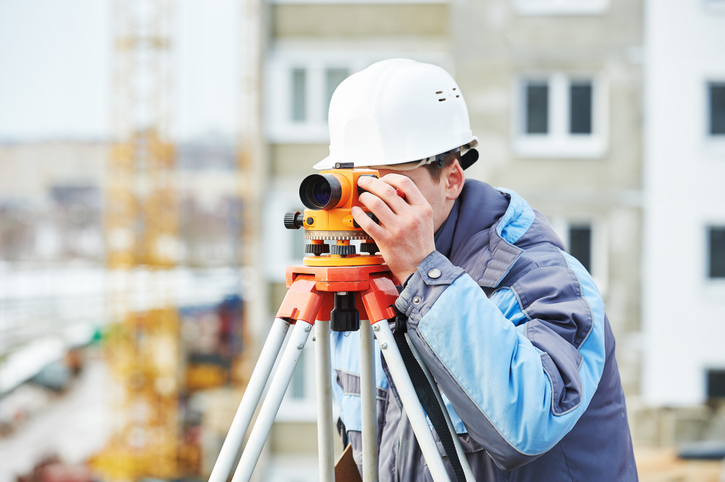Navigating Achievement: The Role of Surveying Expertise in Infrastructure Development

In the dynamic world of building, the significance of careful planning and exact measurements cannot be overstated. Surveying solutions serve a critical function in ensuring that every project, from residential houses to major construction projects, is constructed on a firm foundation—literally. By offering vital data about property boundaries, topography, and current buildings, certified land surveyors lay the basis for effective construction endeavors, aiding to eliminate costly mistakes and disputes down the line.
Understanding the various aspects of surveying can empower property developers, construction workers, and even property owners. From understanding what expect during a land survey to acknowledging the multiple types of surveys provided, each point plays a role to informed decision-making. Whether it is the legal significance of an accurate land survey or the tech developments transforming the field, grasping the nuances of land surveying solutions is essential for those involved in the construction industry or property transactions.
Value of Professional Surveying
Certified surveying is essential for maintaining the precision and dependability of land assessments. When embarking on any development project, having a exact understanding of land limits, topography, and existing facilities is necessary. Surveyors utilize state-of-the-art technology and procedures to obtain data that provides a clear picture of the site, enabling for educated decisions to be made. This precision mitigates risks connected to development, such as legal issues or unexpected costs, thereby guaranteeing that projects proceed without issues.
Furthermore, professional surveyors play a crucial role in safeguarding property rights. An precise land survey establishes well-defined boundaries, which is essential for preventing trespasses and disputes with surrounding properties. This can save property investors from potential legal disputes that may arise because of misunderstandings about property boundaries. When property builders rely on these precise measurements, they can confidently proceed with their projects, understanding that they are following legal and regulatory requirements.
Lastly, the expertise of expert surveyors extends beyond just evaluating land. They also provide valuable insights into zoning compliance and land use planning, which are critical for successful development. By grasping the regulations and limitations that apply to a property, surveyors help clients maneuver through the complexities of development projects. This not only helps to confirm adherence to local laws but also promotes the overall success and sustainability of building projects in the community.
Types of Surveys and Their Uses
Forms play a key role in multiple stages of development and land management. One of the most typical types is the boundary survey, which helps establish the legal limits of a property. This type of survey is essential for landowners and contractors to avoid conflicts over boundary lines and to understand the extent of their property rights. By distinctly marking land borders, these surveys provide assurance and prevent pricey conflicts with neighbors.
Terrain surveys, on the other hand, emphasize the profiles and features of the land. https://surveyingservicesessex.uk/ are used to create detailed maps that display the elevations and valleys of the terrain. This information is vital for architects and civil engineers when constructing structures, as it helps them determine how a structure will fit into the landscape. Contour mapping are often mandated for construction endeavors, as they guide decision-making related to water management, land leveling, and the overall layout of the site.
Another important type of survey is the American Land Title Association/National Society of Professional Surveyors survey, which is often needed during real estate transactions. This survey merges boundary and topographic aspects with extra specifications that ensure compliance with federal standards. It provides thorough information about land limits, existing structures, and any easements or restrictions. This level of thoroughness is essential for investors, as it helps them grasp the potential risks and benefits associated with a property before making significant investments.
Tech Advancements in Land Measurement

The land measurement industry has witnessed substantial change with the arrival of emerging techniques, transforming how land measurements are conducted. One of the notable advancements is the use of global positioning system (GPS) tech, which enables surveyors to ascertain accurate locations with improved accuracy. This technology enhances the efficiency of surveying processes, enabling surveyors to quickly gather data over vast areas without the traditional limitations of manual measurements. The use of GPS also reduces human error, guaranteeing that the results are more reliable.
In addition to GPS, drone innovation has emerged as a powerful tool for surveying. Drones fitted with high-res cameras and sensors can collect comprehensive aerial images and data that were once difficult and time-consuming to obtain. This technology is particularly beneficial for topographic surveys, land subdivisions, and infrastructure projects, as it provides for a holistic view of the terrain and structures from above. Drones can survey extensive areas in a shorter the time it would take using conventional methods, making surveying projects faster and more cost-effective.
Furthermore, advancements in software and analytics tools have transformed how surveyors analyze and display their findings. Advanced software solutions now enable surveyors to create detailed 3D models and visualizations from gathered data, offering clients with clearer insights into the project's topography, boundaries, and potential challenges. This ability enhances cooperation between surveyors, engineers, and architects, leading to more informed decision-making throughout the construction process. As technology continues to advance, the surveying profession is ready to become even more innovative and integral to successful construction projects.
